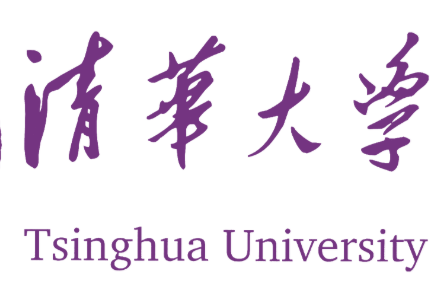Discover how Tsinghua University's groundbreaking Video Prediction Policy (VPP) robot model is revolutionizing AI robotics through advanced video diffusion technology. This innovative system represents a significant leap forward in generalist robot policies, enabling machines to predict and execute complex actions in real-time based on visual data. The VPP model, often called the "Sora of robotics," combines AIGC capabilities with practical robotic applications, creating a versatile platform that could transform industries from manufacturing to healthcare.
Understanding Tsinghua's Video Prediction Policy Robot Model
The Video Prediction Policy (VPP) robot model, developed by researchers at Tsinghua University in collaboration with Starship Era (星動紀元), represents a significant breakthrough in the field of AIGC robotics. Unlike traditional robot systems that rely on explicit programming for each task, VPP utilizes a generalist approach that allows robots to learn from visual data and predict appropriate actions in various scenarios.
At its core, VPP leverages the power of video diffusion models (VDMs) to create predictive visual representations that guide robotic actions. This innovative approach enables robots to understand and interact with their environment in a more human-like manner, making decisions based on visual context rather than pre-programmed instructions.
The system works by conditioning a robotic policy on these predictive visual representations from VDMs. This means the robot can "imagine" the consequences of its actions before executing them, significantly improving performance across a wide range of tasks. The model has been trained on extensive internet video data, allowing it to generalize across different scenarios and environments. [[1]](#__1)
What makes VPP particularly impressive is its ability to function as a generalist robot policy. Rather than being specialized for specific tasks, it can adapt to various situations, making it incredibly versatile for real-world applications. This represents a major step toward creating robots that can function effectively in unpredictable human environments. ??
The technology behind VPP combines several cutting-edge AI approaches, including:
Video diffusion models for visual prediction
Transformer architectures for processing sequential data
Reinforcement learning techniques for policy optimization
Transfer learning to apply knowledge across different domains
This integration of multiple AI technologies creates a powerful system capable of understanding complex visual scenes and translating that understanding into effective robotic actions.
How AIGC Robotics Transforms Real-Time Action Prediction
The integration of AIGC (AI-Generated Content) technologies with robotics has opened new frontiers in how machines perceive and interact with the world. Tsinghua's VPP model exemplifies this transformation, using AI-generated visual predictions to guide robotic decision-making in real-time.
Traditional robotics systems typically rely on explicit programming or limited learning algorithms that struggle with novel situations. In contrast, AIGC robotics systems like VPP can generate and process rich visual representations of potential futures, enabling more sophisticated planning and execution. This represents a paradigm shift in robotic capabilities, moving from reactive to predictive operation.
The real-time action prediction capabilities of VPP are particularly noteworthy. By leveraging the predictive power of video diffusion models, robots can anticipate the outcomes of different actions and choose the most appropriate response within milliseconds. This predictive capability is crucial for applications requiring quick decision-making in dynamic environments.
For example, in a manufacturing setting, a VPP-powered robot could predict how objects will behave when manipulated, allowing it to handle delicate or irregularly shaped items with precision. In healthcare, robots could anticipate patient movements during assistance tasks, providing safer and more comfortable care. ????
The advantages of this AIGC approach to robotics include:
| Capability | Traditional Robot Systems | VPP-Powered AIGC Robots |
|---|---|---|
| Adaptability | Limited to programmed scenarios | Can adapt to novel situations |
| Learning Capacity | Requires extensive training per task | Generalizes across multiple tasks |
| Visual Understanding | Basic object recognition | Complex scene comprehension |
| Prediction Capability | Minimal or none | Can predict outcomes of actions |
This transformation is not just incremental but represents a fundamental shift in how robots can perceive and interact with the world. By generating and processing rich visual representations of potential futures, VPP enables robots to make more informed decisions in complex, real-world environments.

Video Diffusion Models: The Technical Foundation of VPP Robot
The technical innovation behind Tsinghua's VPP robot model lies in its sophisticated use of video diffusion models (VDMs). These models represent the cutting edge of AI research, combining the generative power of diffusion processes with the temporal understanding needed for video analysis and prediction.
Video diffusion models work by learning to reverse a gradual noising process, allowing them to generate high-quality video content from noise. In the context of robotics, these models serve a crucial purpose: they enable the robot to "imagine" the visual consequences of potential actions before executing them. This predictive capability forms the foundation of VPP's decision-making process.
The implementation of VDMs in the VPP system involves several sophisticated technical components:
Temporal Modeling: Unlike static image models, VDMs must capture the evolution of scenes over time, understanding physical dynamics and object interactions.
Multi-Modal Integration: The system integrates visual data with other sensor inputs and task specifications to create a comprehensive understanding of the environment.
Latent Representation: VPP extracts meaningful features from visual data, creating compact representations that capture essential information for decision-making.
Policy Conditioning: The robot's action policy is directly conditioned on the predictive representations from the video diffusion model, creating a tight coupling between perception and action.
Transfer Learning: Knowledge gained from internet-scale video data is transferred to specific robotic tasks, enabling generalization across different scenarios.
This technical architecture allows VPP to bridge the gap between passive video understanding and active robotic control. By leveraging the rich predictive capabilities of VDMs, the system can anticipate how the world will respond to different actions, enabling more intelligent decision-making.
The training process for these models is particularly intensive, requiring massive datasets and computational resources. Researchers at Tsinghua University utilized large collections of internet videos to pre-train the diffusion models, followed by more targeted training on robotic manipulation data. This two-phase approach allows the system to benefit from both the breadth of general video knowledge and the specificity of robotics applications. ????
One of the most impressive aspects of the VPP approach is how it handles the sim-to-real transfer problem—the challenge of applying models trained in simulation to real-world scenarios. The rich visual representations learned by the video diffusion models help bridge this gap, allowing the system to generalize effectively to real-world conditions even when trained primarily on simulated or internet data.
Practical Applications and Future Potential of Tsinghua's VPP Technology
The practical applications of Tsinghua's VPP robot model extend across numerous industries, promising to transform how robots interact with humans and their environment. As this technology continues to mature, we can expect to see VPP-powered robots deployed in increasingly complex and sensitive settings.
In manufacturing, VPP robots could revolutionize assembly lines by adapting to product variations without reprogramming. Their ability to predict how components will behave when manipulated allows for more delicate handling of parts and materials, reducing waste and improving efficiency. The generalist nature of these robots means a single system could potentially handle multiple stages of production that would traditionally require different specialized machines.
Healthcare represents another promising application area. VPP-powered assistive robots could help patients with mobility issues, anticipating their movements and providing appropriate support. In surgical settings, robots with predictive capabilities could assist surgeons by anticipating tool movements and providing stabilization or guidance. The visual understanding capabilities of these systems also make them valuable for monitoring patients and detecting potential issues before they become serious.
Home assistance is perhaps one of the most anticipated applications. Unlike current home robots with limited capabilities, VPP-based systems could handle a wide range of household tasks, from cleaning and organizing to cooking assistance. Their ability to understand and predict human behavior would make them more intuitive to interact with, reducing the learning curve for users. ??????????
Looking to the future, several developments could further enhance the capabilities of VPP technology:
Multimodal Integration: Combining visual prediction with other sensory inputs like touch and sound could create even more comprehensive environmental understanding.
Collaborative Learning: Networks of VPP robots could share experiences and learnings, accelerating the acquisition of new skills across the entire fleet.
Human-Robot Collaboration: Advanced prediction capabilities could enable more natural collaboration between humans and robots, with robots anticipating human needs and actions.
Customizable Specialization: While maintaining their generalist foundation, VPP robots could be fine-tuned for specific industry applications, combining versatility with domain expertise.
The economic impact of this technology could be substantial. By reducing the need for specialized robots for different tasks, companies could achieve significant cost savings while increasing operational flexibility. The ability to deploy the same robotic platform across different applications could democratize access to advanced automation, making it available to smaller businesses that cannot afford multiple specialized systems.
However, the widespread adoption of such advanced robotic systems also raises important ethical and societal questions. Issues of privacy, security, and the impact on employment will need to be carefully addressed as this technology moves from research labs to commercial applications. Responsible development and deployment will be crucial to ensuring that VPP technology benefits society as a whole.

